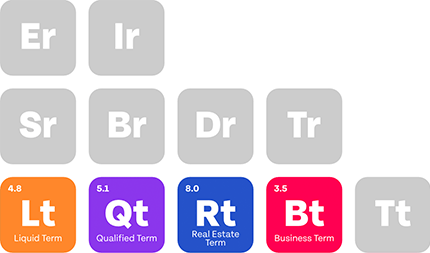Neurologist pay varies significantly depending on a number of factors. From subspecialty choice to years in practice, a neurologist’s earning potential is impacted in different ways as they advance their career. One of the most meaningful influencers of neurologist pay is location. Geography can determine not only a neurologist’s salary and bonus structure, but also job availability and long-term career prospects. Areas with higher demand for patient care, states with staffing shortages, and institutions with more robust internal competition typically have more attractive compensation structures for neurologists.
The 2024 Physicians Thrive Physician Compensation Report shows how localized physician market dynamics influence significant differences in physician pay.
Key Takeaways
- Geographic location plays a major role in determining neurologist pay, with national median neurology salary at approximately $313,000.
- Metro areas’ highest for all physicians average over $400,000, while the lowest-paying metros are under $340,000, underscoring geographic impact.
- Rural areas and underserved communities often offer signing bonuses or loan repayment to compete for talent, while average physician signing bonus for 2023 was $37,473.
- Local cost of living, payer mix, hospital demand, and malpractice risk environment all affect neurologist compensation.
- Neurologists should consider regional variation alongside subspecialty and experience when negotiating pay.
Table of Contents
State & Metro Physician Compensation Differences
National-level statistics paint a broad picture of neurologist pay differences between high-paying and low-paying regions. In all specialties, the highest-paying metro areas with total compensation over $400,000 are Charlotte ($430,890), St. Louis ($426,370), and Oklahoma City ($425,096), while the lowest-paying are Washington, D.C. ($342,139), Baltimore ($346,260), and Boston ($347,553).
While these figures encompass physicians in all fields, compensation for neurologists tends to follow the same market-driven patterns. A neurologist accepting an offer in a high-demand market in the Midwest or South could reasonably expect a salary above the national neurology median, while compensation in densely populated and competitive East or West Coast cities will likely be lower.
The disparities in neurologist pay across metros and states illustrate the importance of taking into account not only gross salary but also local market conditions and demand. Regions with established physician shortages or recruiting initiatives may provide greater negotiation power for prospective neurologists and stronger total compensation packages.

The Compensation Potential of Rural Versus Urban Practice
Although urban areas and larger metros are often associated with higher base salaries, rural communities and underserved cities may offer comparable or higher total neurologist pay with added incentives. Hospitals and practices in designated shortage areas are well-known to provide bonuses or signing incentives, relocation assistance, and loan repayment or loan forgiveness to attract neurologists to the region. Combined with lower living expenses, this can result in a higher effective income than a larger nominal salary in a high-cost metro.
In rural areas, neurologists may also have a broader scope of practice, given that subspecialty consultation may require patient travel. This breadth of practice can translate to increased clinical experience and earning potential through expanded procedural work. Physicians interested in rural practice should also weigh the potential lifestyle and community benefits of a smaller practice setting and non-competitive housing markets.
Cost of Living and Its Impact on Neurologist Pay
Base salary alone is not the sole determining factor of how much money neurologists can take home or put towards investments, savings, and expenses. In practice, a $340,000 salary in a major city with low housing costs such as Houston or Atlanta buys much more than the same salary in California or New York. To this end, neurologists weighing multiple job offers should not only review the gross annual income, but should also take into account local tax rates and cost of living to ensure the stated neurologist pay truly represents financial and wealth-building opportunities, factoring in regional price differences tracked by the Bureau of Labor Statistics.
Negotiation Tactics for Increased Neurologist Pay
Location not only affects neurologist pay at the state and metro level, but also at the individual hospital or group level. Academic medical centers, hospital-owned multispecialty groups, and single-specialty physician-owned practices all recruit for neurologists differently and their offers reflect local market and compensation trends. For example, hospitals that seek to maintain Comprehensive Stroke Center status or expand stroke volume may be willing to provide higher salaries to attract qualified vascular neurologists. The structure of the offer, including the ratio of fixed salary to performance bonuses, productivity-based bonuses, net collections, or RVU-based pay, also plays a role. Currently, nearly 59 percent of physician bonuses nationally are RVU-based.

Successful negotiation of a neurologist’s salary and compensation will be contingent on a robust understanding of these geographic, local, and institutional factors. Physicians should look beyond base salary and carefully review the total package of guaranteed and bonus pay, along with benefits and cost-of-living adjustments, before accepting a job offer. Benchmarking current and potential offers against reputable market data can provide leverage to earn thousands of dollars more over a career.
Maximize Neurologist Pay with Physicians Thrive
Neurologists and physicians should not take their career location decision lightly. In addition to work-life balance, location also determines career opportunities, financial security, and the potential to build wealth. A neurologist salary that seems appealing in national averages or on paper may ultimately provide far less real value and after-tax, take-home pay when considering a high-cost city. By contrast, states or rural communities that are working to attract and retain physician talent may offer greater long-term value when taking into account signing bonuses, lower living expenses, and local quality of life.
To fully capitalize on these opportunities, physicians can not only engage in careful contract negotiation, but should also implement financial management strategies to safeguard their income and build long-term wealth. Disability and life insurance, income tax strategies, and a disciplined, long-term investment approach will help a neurologist transform increased compensation into lasting wealth. For all physicians and neurologists, the decision on when and where to build a career is a critical one.
Physicians Thrive is committed to ensuring that physicians are able to make informed decisions and fully capitalize on the opportunity. We work with physicians on contract negotiation, insurance protection, financial planning, and investment management to help neurologists and other specialists protect their income and build long-term stability. Contact us today to learn more.








































